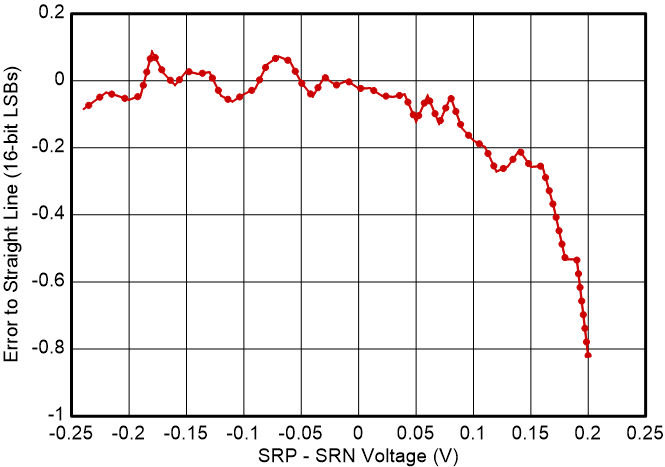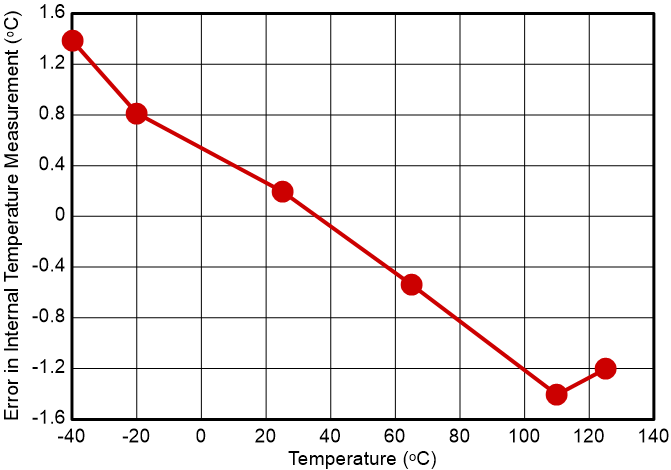JAJSSA8 November 2023 BQ76905
PRODUCTION DATA
- 1
- 1 特長
- 2 アプリケーション
- 3 概要
- 4 Device Comparison Table
- 5 Pin Configuration and Functions
-
6 Specifications
- 6.1 Absolute Maximum Ratings
- 6.2 ESD Ratings
- 6.3 Recommended Operating Conditions
- 6.4 Thermal Information
- 6.5 Supply Current
- 6.6 Digital I/O
- 6.7 REGOUT LDO
- 6.8 Voltage References
- 6.9 Coulomb Counter
- 6.10 Coulomb Counter Digital Filter
- 6.11 Current Wake Detector
- 6.12 Analog-to-Digital Converter
- 6.13 Cell Balancing
- 6.14 Internal Temperature Sensor
- 6.15 Thermistor Measurement
- 6.16 Hardware Overtemperature Detector
- 6.17 Internal Oscillator
- 6.18 Charge and Discharge FET Drivers
- 6.19 Comparator-Based Protection Subsystem
- 6.20 Timing Requirements—I2C Interface, 100-kHz Mode
- 6.21 Timing Requirements—I2C Interface, 400-kHz Mode
- 6.22 Timing Diagram
- 6.23 Typical Characteristics
- 7 Detailed Description
- 8 Application and Implementation
- 9 Device and Documentation Support
- 10Revision History
- 11Mechanical, Packaging, and Orderable Information
6.23 Typical Characteristics













When REGSRC = 3 V, REGSRC current increases as the device attempts to raise the REGOUT voltage to its target 3.3 V.
Figure 6-26 Supply Current in NORMAL Mode vs. Temperature









LFO measured in full speed mode (262 kHz) and low speed mode (32.77 kHz)
Figure 6-19 Low Frequency Oscillator (LFO) Accuracy vs. Temperature

Data collected with 1.5-V differential input on cell.
Figure 6-23 Cell Balancing Resistance vs. Temperature

No communications, REGOUT disabled
Figure 6-27 Supply Current in SLEEP Mode vs. Temperature